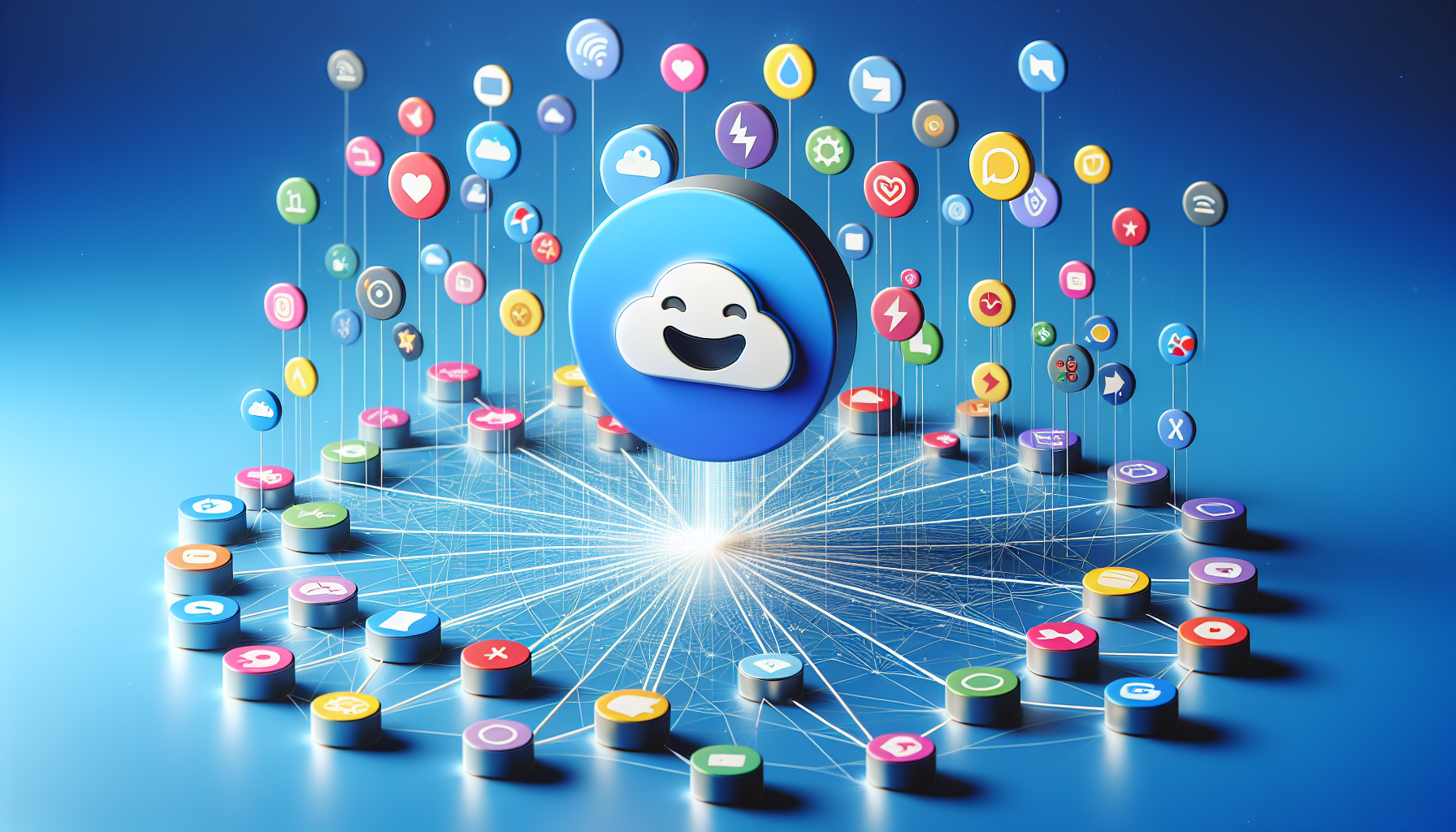In the rapidly evolving realm of artificial intelligence and machine learning, one name stands out – Hugging Face. Known for democratizing AI and fostering a vibrant community, Hugging Face is revolutionizing the way we approach machine learning. But, “what is Hugging Face and how do I use it?” you may ask. Let’s unpack it together.
Key Takeaways
-
Hugging Face is an open-source platform advancing AI and NLP through collaboration, providing resources and community support to democratize AI technology.
-
Users can engage with Hugging Face by creating a free account to access models and datasets, upgrade to a paid account for additional benefits, and utilize features like Spaces to showcase AI projects.
-
The platform offers the Transformers library with pre-trained models to facilitate ML projects and the tools to train custom models, while integrating with other applications for enhanced workflows.
Decoding Hugging Face: The AI and NLP Powerhouse

Envisioned as a platform and community centered around machine learning (ML) and data science, Hugging Face assists users in:
-
Constructing, deploying, and training deep learning models
-
Democratizing access to AI tools, providing even small companies and startups with the tools to train large language models
-
Sharing resources, models, and research
The platform’s significance stems from its open-source nature, which democratizes access to AI tools and enables users to share resources, models, and research.
Hugging Face’s driving force is its mission to make AI technology universally accessible, regardless of background or resources, while fostering collaboration. This vision is embedded in every facet of Hugging Face, from the models and datasets available on the platform to the vibrant community that it nurtures.
Hugging Face’s Mission and Vision
Fundamentally, Hugging Face aims to democratize machine learning and advance artificial intelligence through open source and open science. Since its establishment, Hugging Face has shifted its focus to the advancement of AI through state-of-the-art natural language processing (NLP models).
Hugging Face prioritizes the democratization of AI by:
-
Striving to ensure AI technology is accessible to all
-
Promoting collaboration and open-source development through their data science platform
-
Establishing a platform that enables widespread dissemination of resources, models, and datasets, making AI accessible to all.
A Hub of ML Models
The Hugging Face Hub offers access to a diverse range of over 30,000 datasets, addressing various requirements in the machine learning field, such as natural language processing, computer vision, and audio. For example, the diffusiondb dataset is employed to improve the performance of AI text-to-image models, enabling them to generate more precise images based on textual prompts.
Beyond being a repository of models and datasets, the Hugging Face Hub is a vibrant community that fosters sharing, collaboration, and learning. It’s the GitHub of machine learning, a place where you can discover new models, contribute your own, and collaborate with others to push the boundaries of what’s possible with AI.
Getting Started with Hugging Face
Your journey with Hugging Face begins by creating an account. This process is straightforward and offers you immediate access to the platform’s features. Once you have an account, it’s time to explore the platform and familiarize yourself with its capabilities.
The Hugging Face platform offers a robust set of features to its users, including:
-
Developing custom AI models
-
Accessing a wide range of pre-trained models
-
Collaborative environment designed to support and improve machine learning workflows
The platform has much to offer.
Creating an Account
Signing up for a Hugging Face account is as simple as visiting the website, clicking on the ‘Sign Up’ button, and filling out the registration form. The platform provides free accounts that grant fundamental access to their tools and resources.
However, if you’re looking for more, Hugging Face offers paid accounts that come with a host of benefits, including:
-
A PRO badge on your profile
-
Early access to new platform features
-
Enhanced Inference capabilities
-
A higher tier for AutoTrain
-
Unlimited model and dataset uploads
Transitioning from a free account to a paid subscription is a breeze, with options available in your account settings.
First Steps in the Platform
With your account set up, you’re equipped to explore the Hugging Face platform. The first thing you’ll want to do is explore the AI models available. The model hub feature makes it easy to access and collaborate on community-shared models. You’ll also want to familiarize yourself with the datasets available on the platform, which can be found in the documentation.
Spaces, another feature of Hugging Face, allows you to showcase your AI projects, providing a platform for hosting ML demo applications. To navigate the platform effectively, you should:
-
Utilize model sharing features
-
Download private repositories
-
Upload files
-
Create pull requests
-
Engage in a comprehensive collaborative experience.
Utilizing the Transformers Library

Developed by Hugging Face, the Hugging Face Transformers library is an open-source tool designed for natural language processing and machine learning. It simplifies the tasks of model acquisition, utilization, and pipeline creation, thereby expediting NLP and ML endeavors. Additionally, the library offers a wide array of over 200,000 models that are adept at performing diverse tasks such as:
-
text classification
-
question-answering
-
text generation
-
translation
-
and more.
The Transformers library’s strength lies in its ability to interact with pre-trained models, delegate tasks to these models, and yield results. This eliminates the need to build the models from the ground up, making it easier for you to experiment and incorporate AI into your operational processes using train models.
Installation and Setup
To commence your work with the Transformers library, your machine needs to have Python 3.6+ and either PyTorch 1.1.0+ or TensorFlow 2.0+ installed. The installation process is well-documented on the Hugging Face website, guiding you through every step of the process, including cache setup and offline configuration if necessary.
Following the library’s installation, it’s suggested to configure your environment using a virtual environment. This practice helps contain all dependencies and prevent potential conflicts with other packages. This way, you can ensure that your development environment is clean and ready for you to start experimenting with the Transformers library.
Pre-Trained Models at Your Disposal
One notable feature of the Transformers library is the extensive variety of pre-trained models available for your use. These models, pre-trained on extensive datasets, are readily available for community use, encompassing various tasks and languages. You can access these pre-trained models using the from_pretrained() method, which allows you to efficiently load a model of any available architecture.
The use of pre-trained models is a powerful tool in machine learning. Instead of starting from scratch, you can leverage these models, including test models, to perform various NLP tasks, from text summarization to question-answering and sentiment analysis. This not only saves you time but also allows you to focus more on the specific problem you’re trying to solve.
Training Your Own AI Models with Hugging Face
Despite the immense usefulness of pre-trained models, there could be scenarios where you need to train your own AI models. Hugging Face provides you with the tools and resources to do just that. Before you start training, it’s important to prepare your data. This could involve partitioning the data into training, validation, and test sets, as well as tokenizing the data to ensure it conforms to the appropriate format for fine-tuning the model.
Once your data is prepared, it’s time to fine-tune your model. Fine-tuning involves leveraging a pre-trained model and customizing it to a specific dataset for a particular task. This process can be facilitated by following the tutorial offered by Hugging Face, which encompasses the utilization of a deep learning framework to make the required modifications. As part of the fine-tuning process, it’s also important to configure your training arguments, adjusting parameters such as the learning rate, the number of model layers, the size of embeddings, and other parameters relevant to the model’s architecture and the specificities of the task.
Preparing Your Data
When getting your data ready for training, Hugging Face offers a range of preprocessing classes that can help streamline the process. The data can be in various formats, including:
-
CSV
-
TSV
-
JSON
-
ZIP files
There are no specific size or quantity requirements for the dataset used in Hugging Face.
To ensure the data is in the optimal format for training, you may need to tokenize the raw text data. This involves transforming the text into a format that the model can understand. In addition to tokenization, data cleaning techniques such as assessing and preprocessing image dataset quality may be necessary for effective image classification.
Fine-Tuning and Training Arguments
Fine-tuning is a crucial part of training your own AI model. It involves taking a pre-trained model and customizing it to your specific dataset for a particular task, allowing the model to specialize in the task you’re interested in. This process is facilitated by the Hugging Face platform, which provides the necessary tools and resources to fine-tune your model.
In addition to fine-tuning, it’s also important to configure your training arguments. These are the settings that govern the behavior of the training process and play a crucial role in determining the resultant model parameters acquired during the algorithm’s learning phase. The ‘TrainingArguments’ class in Hugging Face provides a structured approach to configuring these hyperparameters and flags, allowing you to refine the training process to meet your specific objectives.
Showcasing AI Projects in Spaces

Spaces, a unique feature of Hugging Face, enables users to exhibit their AI projects and demos. This provides a platform for hosting ML demo applications, enabling users to build their ML portfolios and present their projects to stakeholders or at conferences. Some examples of Spaces in Hugging Face include CLIP Interrogator, Image to Music, and OpenAI’s Whisper, which can be utilized for various tasks such as automatic speech recognition, translation, and language identification.
Creating a Space in Hugging Face is a straightforward process. Here are the steps:
-
Visit the Spaces main page.
-
Click on Create new Space.
-
Choose a name for your Space.
-
Select an optional license.
-
Once your Space is created, external individuals can engage with your AI project by accessing your Hugging Face Space and experimenting with the demo app you have developed.
-
This provides a hands-on experience with your creation and allows you to receive valuable feedback from the community.
Integrating Hugging Face with Other Applications

Hugging Face functions not only as a standalone platform but also integrates with other applications, enhancing users’ capabilities and connectivity options. One such integration is with Zapier, a tool that allows you to automate tasks by connecting Hugging Face with other apps.
This integration offers the advantage of enabling the integration of machine learning models into custom workflows on a machine learning platform, automating the process of building, training, and deploying models.
Zapier for Seamless Connectivity
Zapier, an online automation tool, interconnects various apps and services to create workflows known as Zaps. These Zaps enable the automation of repetitive tasks by linking triggers from one app to actions in another. Zapier is compatible with numerous popular applications that can be integrated with Hugging Face, including:
-
Customer support platforms such as HelpScout
-
Content management systems
-
Database platforms like Notion
-
Customer relationship management tools like Pipedrive
Establishing a Zapier flow for Hugging Face involves referring to the Hugging Face help documentation available on Zapier. This documentation includes tutorials, solutions for common errors, and detailed instructions on connecting Hugging Face with other apps using Zaps. Additionally, Hugging Face employs session authentication to securely link your account with Zapier.
Import Pipeline for Efficiency
The import pipeline, another robust feature of Hugging Face, enables users to conveniently use any model from the Hugging Face Model Hub for inference across diverse tasks. This feature contributes to efficiency by:
-
Abstracting complex code
-
Providing a simple API for various tasks
-
Enabling users to easily utilize pre-trained models for inference without the requirement for additional model training.
Establishing an import pipeline in Hugging Face involves creating a pipeline object using the pipeline() function from the transformers library, specifying the inference task by providing the task parameter to the pipeline() function, and using the pipeline object to perform inference on your input data. While integrating Hugging Face with other platforms using an import pipeline, potential challenges may include compatibility issues and disparities in data formats and preprocessing requirements.
Navigating Through the Hugging Face Community

The magic truly unfolds within the Hugging Face community. It offers the necessary infrastructure for demonstrating, executing, and implementing AI in real-world scenarios. It’s a place where you can explore the models and datasets shared by others, collaborate on projects, and learn from the best in the field.
Learning from Others
A trove of learning resources awaits in the Hugging Face community. From the NLP course featured on their website to a range of tutorials and courses, there’s plenty to learn.
The Transformers GitHub repository presents a diverse collection of exceptional projects developed using the Transformers library, showcasing the range and creativity prevalent in the community.
Contributing to the Community
Contributions fuel the thriving Hugging Face community. Sharing your AI models, datasets, or Spaces is as simple as creating an account and uploading your resources to the platform. Participation in the Hugging Face community is open to everyone, and contributions extend beyond code to include activities such as answering questions, offering assistance, and contributing to examples or documentation.
Summary
Hugging Face is a powerful tool in the realm of AI and machine learning. With its mission to democratize AI, a wide array of pre-trained models and datasets, and a vibrant community, it’s a platform that offers limitless possibilities. Whether you’re a beginner looking to dip your toes in the world of AI or an experienced data scientist looking to push the boundaries of what’s possible, Hugging Face has something for you. So go ahead, create an account, explore the platform, and start your AI journey with Hugging Face today.
Frequently Asked Questions
What can be done using Hugging Face chat?
Using Hugging Face chat, you can access open-source large language models, deploy your own chat based on a model of your choice with a few clicks using Hugging Face’s infrastructure, and utilize models such as Falcon, StarCoder, and BLOOM (Date: N/A).
For whom is Hugging Face chat to mainly designed?
Hugging Face’s chat tool is primarily designed for developers, researchers, and data scientists who want to build conversational AI applications. It is part of the Hugging Face Transformers library.
Is Hugging Face safe to use?
Yes, Hugging Face is safe to use as it does not store customer data and applies TLS/SSL encryption for data in transit, while also recommending the use of private links for organizations.
What is Hugging Face?
Hugging Face is a platform and community that provides support in building, deploying, and training deep learning models. It is focused on machine learning and data science.
How do I create an account on Hugging Face?
To create an account on Hugging Face, simply visit their website and click on the ‘Sign Up’ button. Then, fill out the sign-up form with your details.

Comments